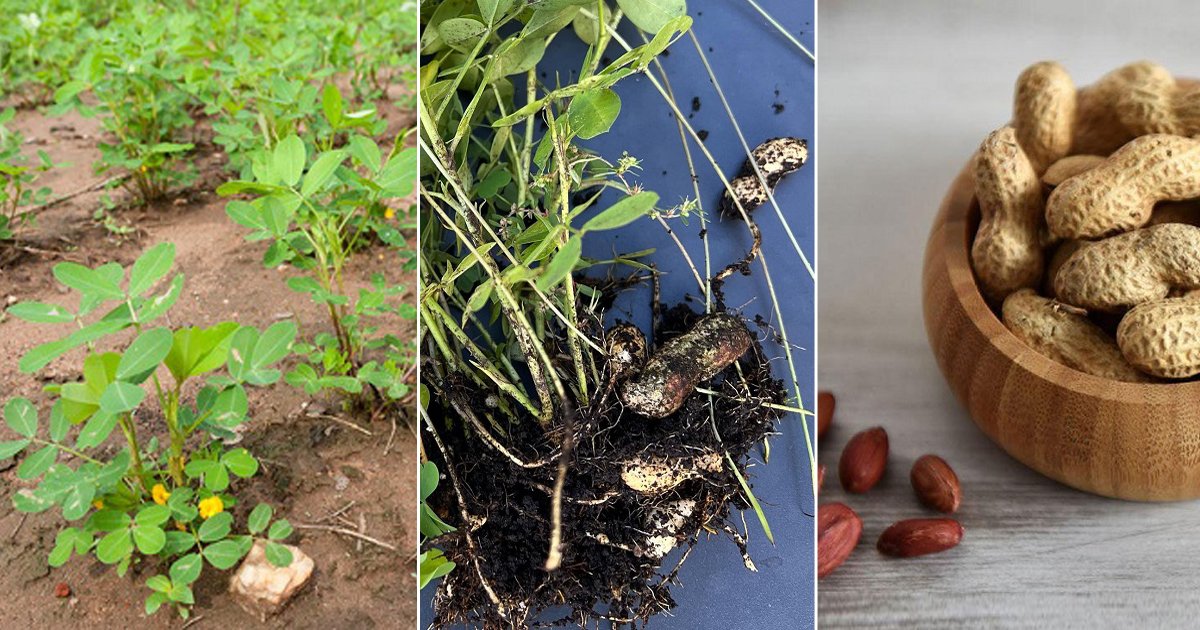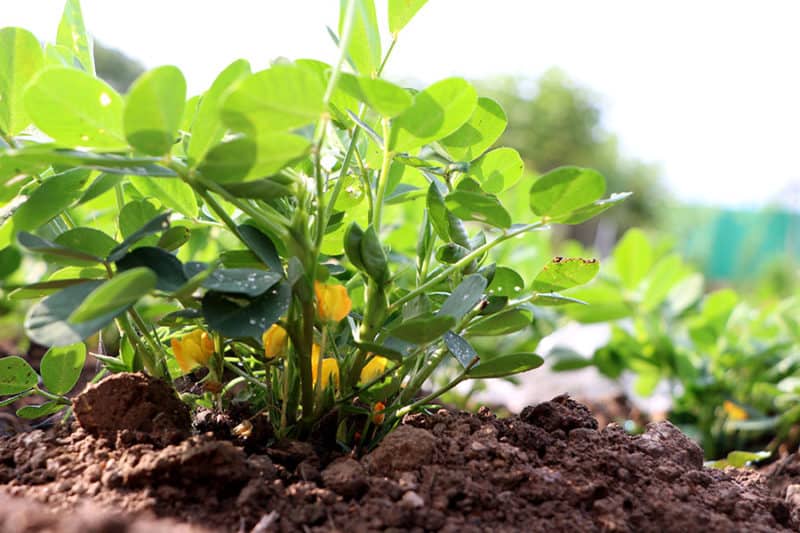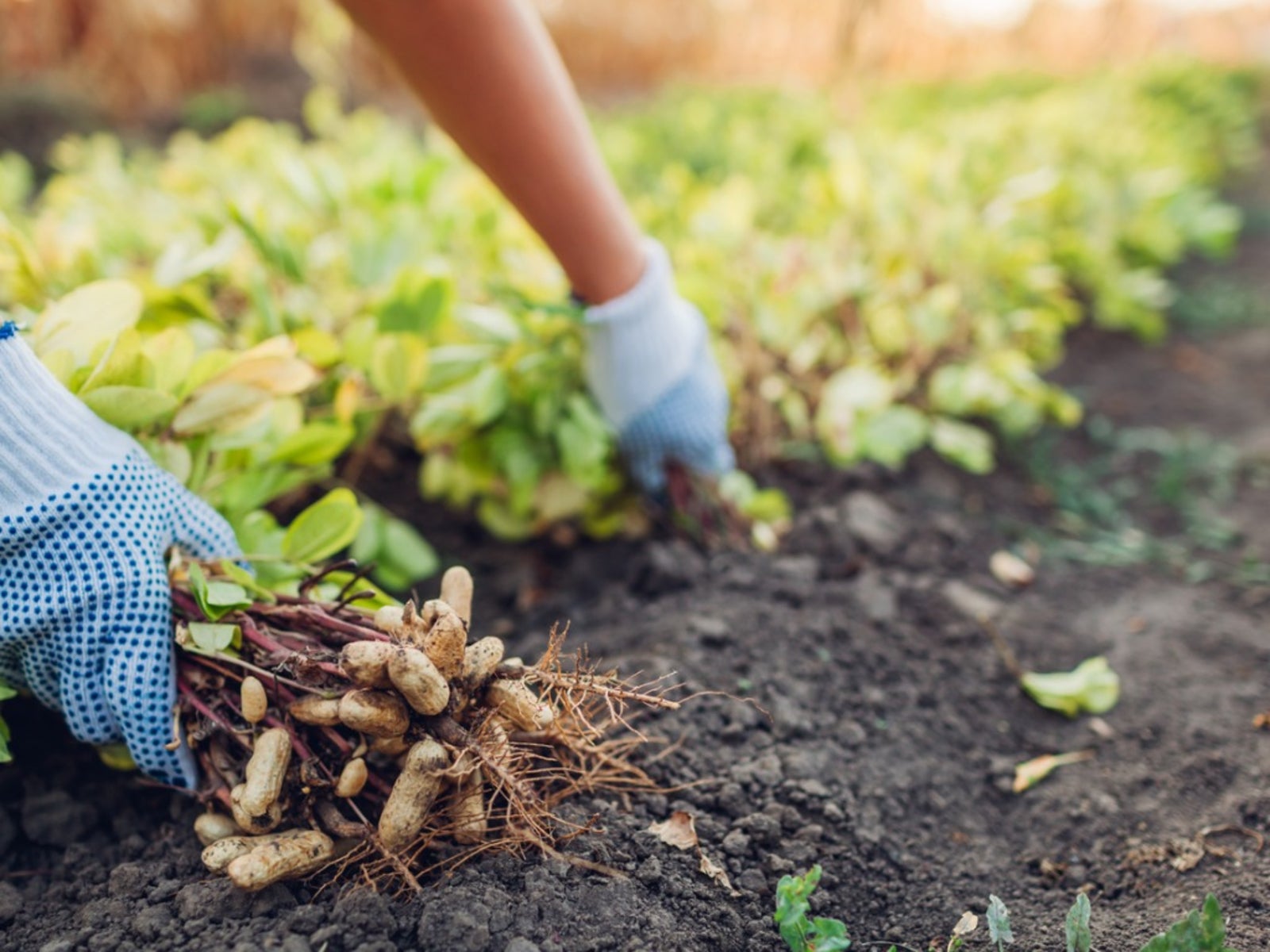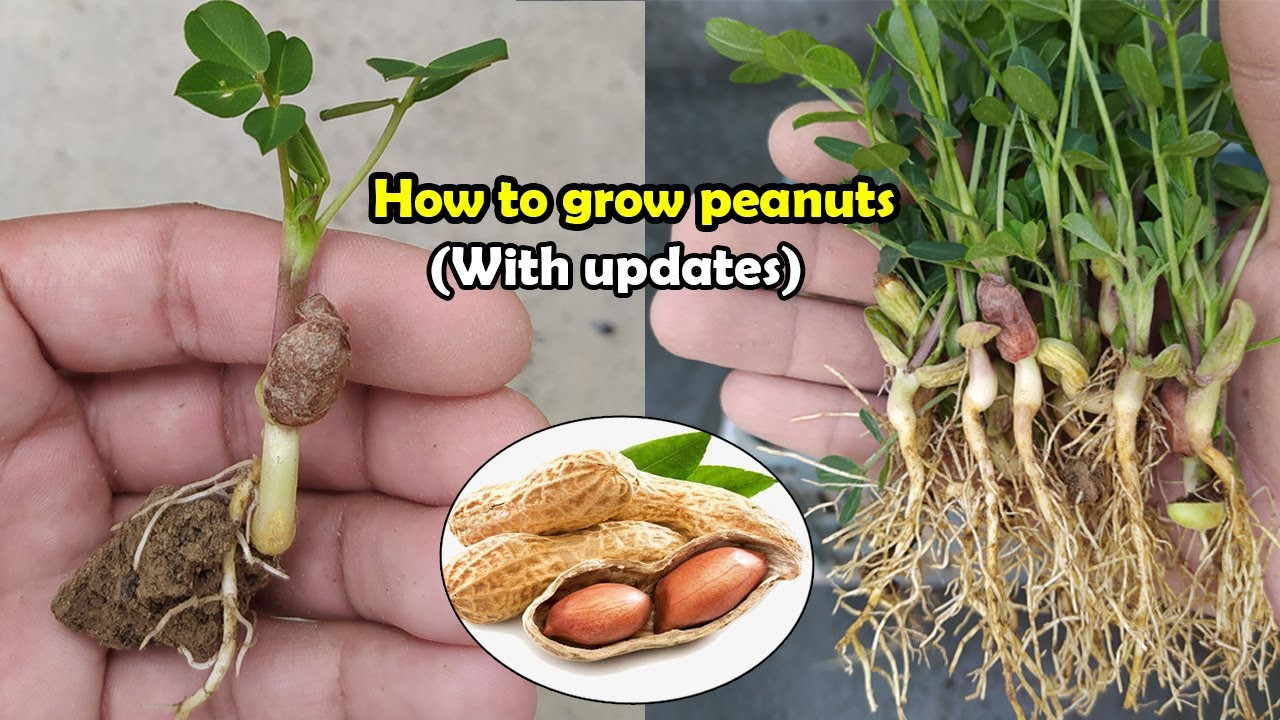Understanding the Life Cycle of Peanuts
Peanuts are a fascinating crop that undergoes a unique transformation from planting to harvesting. To determine how long peanuts take to grow, it’s essential to understand the different stages of their life cycle. The peanut growth period can be broadly divided into several stages: germination, seedling emergence, vegetative growth, flowering, pegging, and maturation.
Germination typically occurs within 7-10 days after planting, depending on factors like soil temperature, moisture, and variety. During this stage, the seed coat cracks open, and the radicle (primary root) emerges, followed by the cotyledon (seed leaf). As the seedling grows, it develops its first set of true leaves, marking the beginning of the vegetative growth stage.
The vegetative growth stage is characterized by the development of leaves, stems, and roots. This stage lasts around 30-40 days, during which the plant produces a taproot and a network of lateral roots. As the plant grows, it begins to produce flowers, which eventually develop into pegs that penetrate the soil.
The flowering stage usually occurs around 40-50 days after planting and lasts for about 10-14 days. During this stage, the plant produces small, yellow flowers that self-pollinate, resulting in the formation of pegs. The pegs then penetrate the soil, and the peanut pods begin to develop.
The maturation stage is the final stage of the peanut life cycle, lasting around 60-90 days. During this stage, the peanut pods mature, and the kernels dry down. The exact duration of the maturation stage depends on factors like weather, soil type, and variety.
Understanding the life cycle of peanuts is crucial to determining how long peanuts take to grow. By recognizing the different stages of growth, farmers and gardeners can optimize their cultivation practices, ensuring a healthy and productive crop. On average, peanuts take around 120-150 days to mature from planting to harvesting. However, this duration can vary depending on the specific variety, climate, and growing conditions.
Factors Affecting Peanut Growth and Development
Peanut growth and development are influenced by a complex array of factors, including climate, soil type, watering, and fertilization. Understanding these factors is crucial to determining how long peanuts take to grow and optimizing cultivation practices. Climate, in particular, plays a significant role in peanut growth, with temperature, rainfall, and sunlight affecting the plant’s development.
Temperature is a critical factor in peanut growth, with optimal temperatures ranging from 65°F to 95°F (18°C to 35°C). Temperatures above 100°F (38°C) can lead to heat stress, while temperatures below 50°F (10°C) can cause chilling injury. Rainfall is also essential, with peanuts requiring approximately 20-30 inches (500-750 mm) of rainfall per growing season. However, excessive rainfall can lead to waterlogged soil, reducing peanut yields.
Soil type is another critical factor, with peanuts preferring well-draining, sandy loam soils with a pH between 6.0 and 7.0. Soil with poor drainage or high pH levels can lead to reduced peanut yields and increased disease susceptibility. Watering is also essential, with peanuts requiring consistent moisture levels throughout the growing season. However, overwatering can lead to root rot and other diseases.
Fertilization is also crucial, with peanuts requiring adequate nutrients to support growth and development. Nitrogen, phosphorus, and potassium are essential macronutrients, while micronutrients like zinc, boron, and manganese are also important. However, excessive fertilization can lead to environmental pollution and reduced peanut yields.
In addition to these factors, pests and diseases can also impact peanut growth and development. Common pests include aphids, whiteflies, and spider mites, while diseases like powdery mildew, leaf spot, and root rot can significantly reduce peanut yields. Understanding these factors and implementing integrated pest management (IPM) strategies can help minimize their impact.
By understanding the complex interplay of factors affecting peanut growth and development, farmers and gardeners can optimize their cultivation practices to promote healthy and productive peanut crops. While the exact duration of peanut growth can vary depending on these factors, a general understanding of their impact can help determine how long peanuts take to grow.
How to Plant Peanuts for Optimal Growth
Planting peanuts requires careful planning and attention to detail to ensure optimal growth and development. To determine how long peanuts take to grow, it’s essential to start with a well-planned planting strategy. Here are some tips and best practices for planting peanuts:
Selecting the right variety is crucial, as different varieties have different growth habits and maturation periods. Choose a variety that is suitable for your climate and soil type. Some popular varieties include ‘Virginia’, ‘Spanish’, and ‘Valencia’.
Preparing the soil is also essential, as peanuts prefer well-draining, sandy loam soils with a pH between 6.0 and 7.0. Test your soil to determine its pH and nutrient levels, and amend it if necessary. Add organic matter like compost or manure to improve soil fertility and structure.
Sowing seeds at the right depth and spacing is critical for optimal growth. Plant seeds 1-2 inches deep and 3-4 inches apart, in rows that are 3-4 feet apart. This will allow for good air circulation and sunlight penetration.
Timing is also important, as peanuts are typically planted in late spring or early summer, when the soil has warmed up to at least 65°F (18°C). In areas with a long growing season, peanuts can be planted in late winter or early spring.
After planting, keep the soil consistently moist during the first few weeks. This will help the seeds germinate and the seedlings establish themselves. Once the plants are about 6 inches tall, you can reduce watering to about 1 inch per week.
By following these tips and best practices, you can give your peanut plants the best chance to grow and thrive. Remember to monitor your plants regularly and adjust your care routine as needed. With proper care and attention, you can enjoy a bountiful peanut harvest in about 120-150 days.
The Role of Weather and Climate in Peanut Growth
Weather and climate play a crucial role in peanut growth and development, affecting the plant’s ability to grow, produce flowers, and mature. Understanding how weather conditions impact peanut growth is essential to determining how long peanuts take to grow and optimizing cultivation practices.
Temperature is a critical factor in peanut growth, with optimal temperatures ranging from 65°F to 95°F (18°C to 35°C). Temperatures above 100°F (38°C) can lead to heat stress, while temperatures below 50°F (10°C) can cause chilling injury. Peanuts are also sensitive to frost, which can damage or kill the plants.
Rainfall is also essential for peanut growth, with peanuts requiring approximately 20-30 inches (500-750 mm) of rainfall per growing season. However, excessive rainfall can lead to waterlogged soil, reducing peanut yields and increasing the risk of disease. Drought, on the other hand, can cause stress to the plants, reducing yields and affecting quality.
Sunlight is also critical for peanut growth, with peanuts requiring full sun to produce well. However, excessive sunlight can cause sunscald, which can damage the plants and reduce yields.
Climate conditions, such as humidity and wind, can also impact peanut growth. High humidity can lead to disease, while strong winds can damage the plants and reduce yields.
To adapt to different climate conditions, peanut farmers can use various techniques, such as irrigation, mulching, and windbreaks. Irrigation can help to supplement rainfall, while mulching can help to retain moisture and reduce soil temperature. Windbreaks can help to reduce wind damage and improve air circulation.
By understanding the role of weather and climate in peanut growth, farmers and gardeners can take steps to optimize their cultivation practices and improve yields. While the exact duration of peanut growth can vary depending on weather conditions, a general understanding of their impact can help determine how long peanuts take to grow.
Peanut Growth Stages: From Germination to Maturity
Peanuts go through several growth stages, from germination to maturity, each with its unique characteristics and requirements. Understanding these stages is crucial to determining how long peanuts take to grow and optimizing cultivation practices.
The first stage is germination, which typically occurs within 7-10 days after planting. During this stage, the seed coat cracks open, and the radicle (primary root) emerges, followed by the cotyledon (seed leaf).
The next stage is seedling emergence, which occurs around 10-14 days after planting. During this stage, the seedling grows its first set of true leaves and develops its root system.
The vegetative growth stage follows, lasting around 30-40 days. During this stage, the plant produces a taproot and a network of lateral roots, and the stem and leaves grow.
The reproductive growth stage begins around 40-50 days after planting, during which the plant produces flowers and pegs. The flowers self-pollinate, and the pegs penetrate the soil, where the peanut pods develop.
The maturation stage is the final stage, lasting around 60-90 days. During this stage, the peanut pods mature, and the kernels dry down. The exact duration of this stage depends on factors like weather, soil type, and variety.
Understanding the different growth stages of peanuts is essential to determining how long peanuts take to grow. By recognizing the key characteristics of each stage, farmers and gardeners can optimize their cultivation practices, including irrigation, fertilization, and pest management.
Additionally, understanding the growth stages of peanuts can help farmers and gardeners identify potential problems and take corrective action. For example, if the plants are not producing flowers or pegs, it may indicate a nutrient deficiency or inadequate moisture.
By mastering the art of growing peanuts, farmers and gardeners can enjoy a bountiful harvest and reap the rewards of their labor. Whether you’re a seasoned farmer or a beginner gardener, understanding the growth stages of peanuts is essential to success.
Common Challenges and Solutions in Peanut Cultivation
Peanut cultivation can be challenging, with various pests, diseases, and nutrient deficiencies affecting yields and quality. Understanding these challenges and implementing effective management strategies is crucial to determining how long peanuts take to grow and optimizing cultivation practices.
One common challenge is pests, such as aphids, whiteflies, and spider mites. These pests can cause significant damage to peanut plants, reducing yields and affecting quality. To manage pests, farmers can use integrated pest management (IPM) strategies, including crop rotation, biological control, and chemical control.
Diseases are another common challenge in peanut cultivation. Fungal diseases, such as powdery mildew and leaf spot, can cause significant damage to peanut plants. Bacterial diseases, such as bacterial wilt, can also affect peanut plants. To manage diseases, farmers can use fungicides and bactericides, as well as implement cultural practices, such as crop rotation and sanitation.
Nutrient deficiencies are also a common challenge in peanut cultivation. Peanuts require adequate nutrients, including nitrogen, phosphorus, and potassium, to grow and produce well. To manage nutrient deficiencies, farmers can use fertilizers and implement soil conservation practices, such as contour farming and terracing.
Soil erosion is another common challenge in peanut cultivation. Soil erosion can cause significant losses in peanut yields and affect soil quality. To manage soil erosion, farmers can implement conservation tillage practices, such as reduced tillage and no-till farming.
By understanding these common challenges and implementing effective management strategies, farmers and gardeners can optimize their peanut cultivation practices and improve yields and quality. While the exact duration of peanut growth can vary depending on these factors, a general understanding of their impact can help determine how long peanuts take to grow.
Additionally, farmers and gardeners can use innovative and creative solutions to manage these challenges. For example, using cover crops and crop rotation can help manage pests and diseases, while implementing conservation tillage practices can help manage soil erosion.
By mastering the art of growing peanuts, farmers and gardeners can enjoy a bountiful harvest and reap the rewards of their labor. Whether you’re a seasoned farmer or a beginner gardener, understanding the common challenges and solutions in peanut cultivation is essential to success.
Harvesting Peanuts: Timing and Techniques
Harvesting peanuts is a critical stage in the cultivation process, and proper timing and techniques are essential to ensure a successful harvest. Understanding how to harvest peanuts can help determine how long peanuts take to grow and optimize cultivation practices.
The timing of peanut harvesting depends on the variety and growing conditions. Generally, peanuts are ready to harvest about 120-150 days after planting, when the plants have turned yellow and the leaves have dropped off. However, the exact timing may vary depending on factors such as weather, soil type, and moisture levels.
There are several techniques for harvesting peanuts, including digging, pulling, and using a peanut combine. Digging involves manually digging up the peanut plants, while pulling involves using a machine to pull the plants out of the ground. A peanut combine is a specialized machine that can harvest, dry, and store peanuts in a single operation.
Proper harvesting techniques are essential to ensure a successful harvest. Peanuts should be harvested when the plants are dry and the soil is moist, to prevent damage to the plants and the peanuts. The peanuts should be dried to a moisture level of around 10% to prevent spoilage and ensure storage.
After harvesting, peanuts should be stored in a cool, dry place to maintain their quality. Peanuts can be stored in a variety of containers, including bags, bins, and silos. The storage conditions should be controlled to maintain a consistent temperature and humidity level.
By understanding the importance of proper harvesting techniques and timing, farmers and gardeners can optimize their peanut cultivation practices and ensure a successful harvest. While the exact duration of peanut growth can vary depending on these factors, a general understanding of their impact can help determine how long peanuts take to grow.
Additionally, farmers and gardeners can use innovative and creative solutions to improve their harvesting techniques. For example, using precision agriculture techniques, such as GPS and drones, can help optimize harvesting and reduce waste.
By mastering the art of harvesting peanuts, farmers and gardeners can enjoy a bountiful harvest and reap the rewards of their labor. Whether you’re a seasoned farmer or a beginner gardener, understanding the importance of proper harvesting techniques and timing is essential to success.
Conclusion: Mastering the Art of Growing Peanuts
Mastering the art of growing peanuts requires a deep understanding of the various factors that influence peanut growth and development. From the life cycle of peanuts to the importance of proper harvesting techniques, every stage of the cultivation process plays a critical role in determining the success of a peanut crop.
By understanding the different stages of peanut growth, from germination to maturity, farmers and gardeners can optimize their cultivation practices and ensure a successful harvest. Additionally, recognizing the impact of climate, soil type, watering, and fertilization on peanut growth can help farmers and gardeners make informed decisions about their cultivation practices.
Furthermore, being aware of the common challenges faced by peanut farmers, such as pests, diseases, and nutrient deficiencies, can help farmers and gardeners develop effective management strategies to mitigate these challenges. By implementing proper harvesting techniques and timing, farmers and gardeners can ensure a successful harvest and maximize their yields.
In conclusion, growing peanuts is a complex process that requires careful planning, attention to detail, and a deep understanding of the various factors that influence peanut growth and development. By mastering the art of growing peanuts, farmers and gardeners can enjoy a bountiful harvest and reap the rewards of their labor.
Whether you’re a seasoned farmer or a beginner gardener, the knowledge and best practices outlined in this article can help you grow peanuts successfully. By applying these principles and techniques, you can optimize your peanut cultivation practices and enjoy a successful harvest.
Remember, the key to successful peanut cultivation is to understand the life cycle of peanuts, recognize the impact of various factors on peanut growth, and implement effective management strategies to mitigate challenges. With this knowledge and these best practices, you can master the art of growing peanuts and enjoy a bountiful harvest.





:max_bytes(150000):strip_icc()/peanut-plant-profile-4797389-hero-439ff76cc5444ca7869eacb25e683306.jpg)


